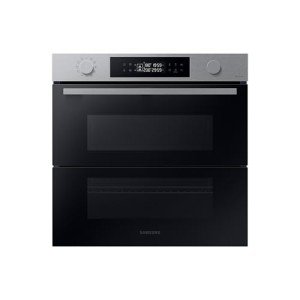The Rise of Built-In Ovens: A Seamless Approach to Modern Cooking
In modern cooking areas, where style aesthetic appeals mix flawlessly with performance, one appliance stands out as a true game changer: the built-in oven. As house owners and chefs alike continue to look for ingenious options that boost their cooking experience, built-in ovens have ended up being progressively popular. This article checks out the benefits, factors to consider, and trends surrounding built-in ovens, highlighting why they are a vital function in contemporary cooking spaces.
What is a Built-In Oven?
A built-in oven is a cooking area appliance designed to be integrated into the kitchen cabinetry of a kitchen area instead of standing alone. Unlike standard freestanding ovens, which can be moved and positioned anywhere, built-in ovens can be found in different designs and sizes to fit specifically within designated spaces. Readily available in single or double configurations, these ovens provide a structured appearance that complements modern-day kitchen area designs.
Benefits of Built-In Ovens
1. Space-Saving Design
Among the most appealing advantages of built-in ovens is their space-saving design. By integrating the oven into kitchen cabinetry, you can maximize important counter and flooring space. This is particularly useful in smaller sized kitchens, where maximizing space is vital. Built-in ovens can be set up at eye level, making them more accessible and lowering the requirement to flex down.

2. Visual Appeal
Built-in ovens contribute to a smooth and cohesive cooking area design. Offered in various surfaces-- such as stainless-steel, black, white, and custom-made cabinets-- they can mix flawlessly into the general design. This visual appeal improves the cooking area's visual consistency and elevates the area, creating a modern-day and sophisticated environment.
3. Boosted Functionality
Many built-in ovens come equipped with sophisticated cooking technologies, such as convection cooking, steam ovens, and smart functions. These enhancements enable flexible cooking alternatives, making it easier to accomplish professional-level outcomes at home. Smart built-in ovens can even connect to Wi-Fi, making it possible for users to control the oven from another location, get notifications, and access a variety of cooking programs and recipes.
4. Improved Ventilation
Because built-in ovens can be integrated with kitchen area hoods and ventilation systems, they can assist keep much better air quality and reduce cooking smells. This is especially significant for those who love to prepare with aromatic spices and active ingredients, as a reliable ventilation system can keep the kitchen area comfortable and inviting.
5. Personalization Options
Built-in ovens provide a wide range of modification options to suit specific cooking designs and requirements. From professional-grade home appliances with numerous cooking modes to compact designs for smaller kitchens, house owners can pick the oven that fits their specific requirements. Numerous producers also provide personalized front panels, permitting you to match the oven's appearance to your cabinetry for a truly combined look.
Factors to consider When Choosing a Built-In Oven
While built-in ovens have numerous benefits, there are necessary factors to consider to keep in mind before buying:
1. Cost
Built-in ovens typically come with a higher price than their freestanding equivalents due to their design and installation requirements. It's crucial to factor in both the cost of the oven and any extra costs connected to cabinetry adjustments or setup.
2. Installation Requirements
Setting up a built-in oven frequently requires expert assistance, especially if you need to customize existing cabinets. Guarantee that you think about any expenses associated with setup, including labor and possible cabinets modifications.
3. Size and Dimensions
Before purchasing a built-in oven, measure the designated area properly to ensure a proper fit. Built-in ovens been available in numerous sizes and configurations, so selecting one that aligns with your requirements and kitchen design is important.
4. Lifestyle and Usage
Consider your cooking habits and requires when picking a built-in oven. If you frequently host large gatherings, a double oven might be more advantageous. On the other hand, if you have a compact cooking area, a single-wall oven might be adequate.
Patterns in Built-In Ovens
The kitchen area home appliance market is continually evolving, and built-in ovens are not exempt from emerging patterns. Some existing trends include:
Smart Technology Integration: With the rise of wise home technology, built-in ovens now frequently feature connection choices. This allows users to monitor cooking progress and change settings by means of mobile apps.
Energy Efficiency: As sustainability ends up being a concern, many makers are buying energy-efficient built-in ovens that decrease energy usage while preserving performance.
Multi-functional Designs: Built-in ovens now offer features such as air frying, slow cooking, and steaming, supplying versatility that satisfies a broad range of cooking techniques.
Conclusion
Built-in ovens undoubtedly represent a best mix of design, function, and benefit in today's kitchens. As integrated oven hob & extractor packages select this modern-day solution, the focus shifts to developing a cooking area that is as visually pleasing as it is useful. Whether you are developing a new home or remodeling your kitchen area, considering a built-in oven might elevate your culinary experience and transform your kitchen into a trendy and practical sanctuary. With a range of alternatives available and continuous developments in technology, built-in ovens remain a standout choice for both amateur cooks and culinary lovers alike.
